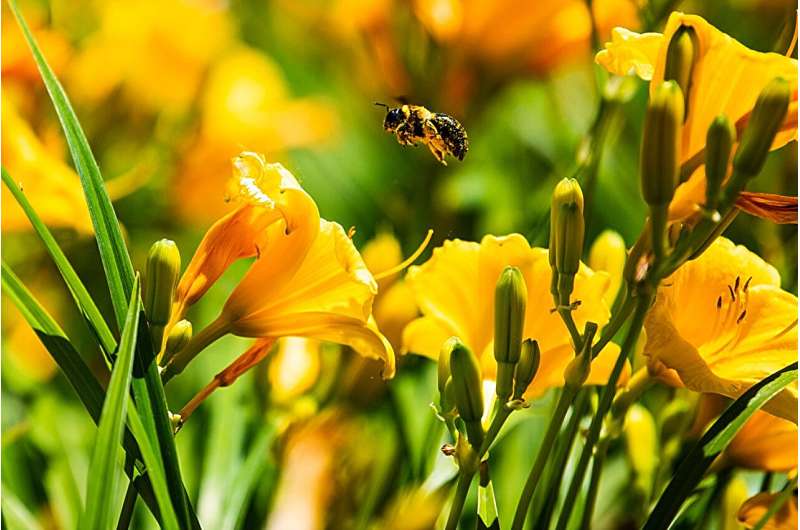This article has been reviewed according to Science X's editorial process and policies. Editors have highlighted the following attributes while ensuring the content's credibility:
fact-checked
peer-reviewed publication
trusted source
proofread
Researchers develop strategy for adding keystone species to collapsing ecosystems

There are very few animals as important to our world as honeybees. There is, of course, the delicious honey they produce, but they are also essential in maintaining food security and the biodiversity that is threatened by climate change and becoming our strongest natural defense against it.
But with the planet facing a climate change-induced loss of biodiversity, what happens when honeybees die?
New Northeastern University research, published in Communications Biology, aims to help address the impending biodiversity crisis. The researchers say they have found a new strategy for restoring lost biodiversity by, essentially, identifying the equivalent of a honeybee in different ecosystems and reintroducing it into a particular collapsing ecosystem.
The term used by ecologists is "keystone species," one that holds an ecosystem together.
"Our work essentially gives us an interesting way to bring network science together with dynamics to address the problem that many researchers have been highlighting regarding the extinction of species, reintroduction of species, how to identify keystone species, at what level we should be collecting that data and what to do if our ecosystems are data poor," says Udit Bhatia, author on the paper who started this work at Northeastern before graduating in 2018 with a Ph.D. in civil and environmental engineering.
The team of researchers also includes Auroop Ganguly, professor of civil and environmental engineering at Northeastern and director of AI4CaS (AI for Climate and Sustainability) within Northeastern's Institute for Experiential AI; Tarik Gouhier, associate professor of marine and environmental sciences at Northeastern; and Sarth Dubey, Bhatia's colleague at the Indian Institute of Technology.
In ecology, the quest to find keystone species has been elusive, Ganguly says. Traditionally, ecologists have focused on more complex, "higher order topological" factors to help explain which species should be reintroduced to help recover biodiversity, according to Bhatia. There is, for example, what Bhatia calls "betweenness," the idea that a keystone species is one that is most important to the flow of the network. It is "in between" the most species in an ecosystem's network.
But the networked method they've developed says the simplest answer might actually be the best one.
"What our findings essentially suggest is that the ecologically most obvious answer—the species which are most connected—may be the ones that result in the fastest gain," Bhatia says.
More information: Udit Bhatia et al, Network-based restoration strategies maximize ecosystem recovery, Communications Biology (2023). DOI: 10.1038/s42003-023-05622-3
Journal information: Communications Biology
Provided by Northeastern University




















